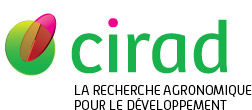Gascuel Quentin, Buendia Luis, Pecrix Yann, Blanchet Nicolas, Muños Stéphane, Vear Felicity, Godiard Laurence. 2016. RXLR and CRN effectors from the sunflower downy mildew pathogen Plasmopara halstedii induce hypersensitive-like responses in resistant sunflower lines. Frontiers in Plant Science, 7:1887, 15 p.

|
Version publiée
- Anglais
Sous licence  . .
Gasuel_et_al_2016_Front_Plant_Sci.pdf Télécharger (6MB) | Prévisualisation |
Quartile : Q1, Sujet : PLANT SCIENCES
Résumé : Plasmopara halstedii is an obligate biotrophic oomycete causing downy mildew disease on sunflower, Helianthus annuus, an economically important oil crop. Severe symptoms of the disease (e.g., plant dwarfism, leaf bleaching, sporulation and production of infertile flower) strongly impair seed yield. Pl resistance genes conferring resistance to specific P. halstedii pathotypes were located on sunflower genetic map but yet not cloned. They are present in cultivated lines to protect them against downy mildew disease. Among the 16 different P. halstedii pathotypes recorded in France, pathotype 710 is frequently found, and therefore continuously controlled in sunflower by different Pl genes. High-throughput sequencing of cDNA from P. halstedii led us to identify potential effectors with the characteristic RXLR or CRN motifs described in other oomycetes. Expression of six P. halstedii putative effectors, five RXLR and one CRN, was analyzed by qRT-PCR in pathogen spores and in the pathogen infecting sunflower leaves and selected for functional analyses. We developed a new method for transient expression in sunflower plant leaves and showed for the first time subcellular localization of P. halstedii effectors fused to a fluorescent protein in sunflower leaf cells. Overexpression of the CRN and of 3 RXLR effectors induced hypersensitive-like cell death reactions in some sunflower near-isogenic lines resistant to pathotype 710 and not in susceptible corresponding lines, suggesting they could be involved in Pl loci-mediated resistances.
Mots-clés Agrovoc : résistance aux maladies, pathotype, effecteur moléculaire, résistance génétique, Plasmopara halstedii, Helianthus annuus, expression des gènes, pouvoir pathogène
Mots-clés libres : Plasmopara halstedii, Downy mildew, Resistant sunflower, Oomycete effectors, Hypersensitive response (HR), Agrobacterium-mediated transient expression, Subcellular localization
Auteurs et affiliations
- Gascuel Quentin, Université de Toulouse (FRA)
- Buendia Luis, Université de Toulouse (FRA)
-
Pecrix Yann, Université de Toulouse (FRA)
 ORCID: 0000-0002-6537-3145
ORCID: 0000-0002-6537-3145
- Blanchet Nicolas, Université de Toulouse (FRA)
- Muños Stéphane, Université de Toulouse (FRA)
- Vear Felicity, INRA (FRA)
- Godiard Laurence, INRA (FRA)
Source : Cirad-Agritrop (https://agritrop.cirad.fr/600454/)
[ Page générée et mise en cache le 2024-04-09 ]




